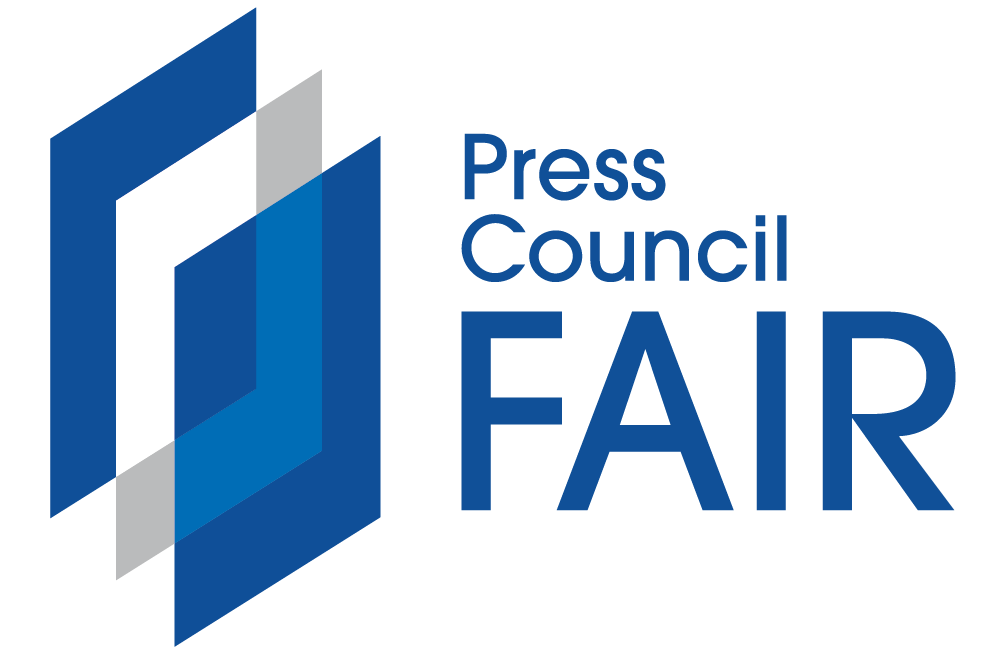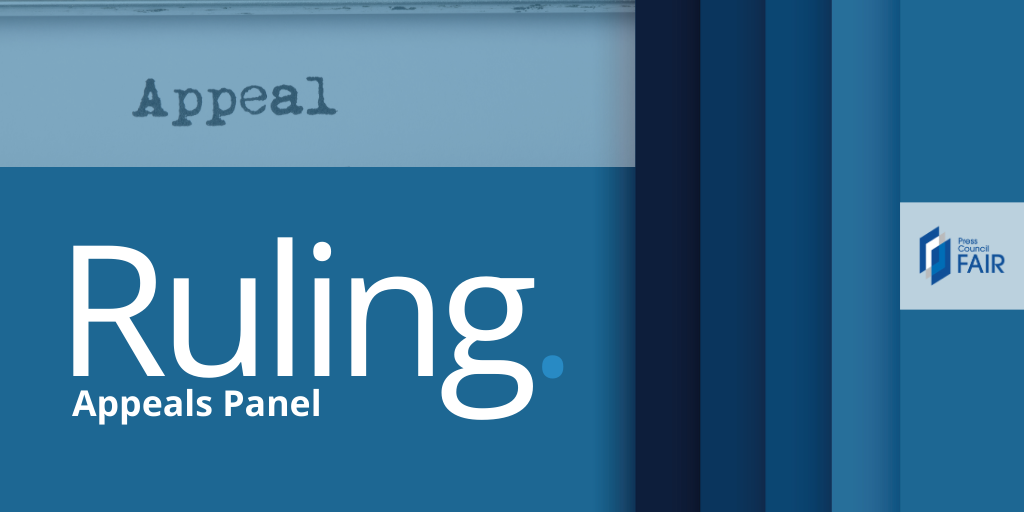Lizelle Strydom vs. Sunday Times
SUMMARY
The headline to the story in dispute read, Uproar over ‘bantus’ moving in on West Coast hamlet (published on 15 March 2015).
This ruling by Press Ombud Johan Retief was based on the Press Code that was in effect before 30 September 2022.
The report said that Lizelle Strydom had been the head of tourism for the region, and that she was forced to resign after she had refused to retract her claim that a mining development on a farm between Hopefield and Langebaan would attract black people (“bantus”).
Strydom complained that the story inter alia incorrectly said that she had:
- been the head of tourism for the region;
- used the word “bantus” in an interview with the journalist;
- used a picture of an old SA flag as her Facebook page profile picture; and
- said the proposed mining would destroy the culture of the West Coast (she rather said that mining might destroy the environment “seeing that we are situated on a[n] underground waterbed”).
She concluded that the story inaccurately portrayed her as a racist, which had tarnished her dignity and reputation.
The newspaper admitted it was wrong to call her the head of tourism (she was a tourism official in Hopefield), and that she had resigned from the post because of “political interference”. Sunday Times was directed to correct these errors.
On the allegation that Strydom had used a picture of the old South African flag as her Facebook profile picture, Retief said he was left with one person’s word against another – which resulted in a “no finding” on this matter. The same went for the alleged statement about the “culture” of the West Coast.
The Ombud dismissed the complaint about the use of the word “bantu”. He said he had obtained a copy of the journalist’s notes – which seemed to be authentic and which did contain that word.
THE RULING ITSELF
This ruling is based on the written submissions of Ms Lizelle Strydom and those of Susan Smuts, legal editor of the Sunday Times newspaper.
Complaint
Strydom is complaining about a report in the Sunday Times of 15 March 2015, headlined Uproar over ‘bantus’ moving in on West Coast hamlet.
She complains that the story incorrectly said that she had:
· been head of tourism for the region;
· used the word “bantus” in the interview with the journalist;
· used a picture of an old SA flag as her Facebook page profile picture; and
· said proposed mining would destroy the culture of the West Coast.
Strydom adds that the article erroneously called the mine “phosphorous”, while it was in fact a “phosphate” mine.
She concludes that the story portrayed her as a racist, which was “defamatory” and “inaccurate”.
The texts
The report, written by Shanaaz Eddington, said that Strydom had been the head of tourism for the region, and that she was forced to resign after she had refused to retract her claim that the development on a farm between Hopefield and Langebaan would attract black people (“bantus”).
Analysis
Head of tourism; ‘phosphorous’ mine
Strydom complains the story erroneously stated that:
· she had been head of tourism for the region – she adds that she was a tourism official in Hopefield, and that she resigned from the post because of “political interference”; and
· the mine was a “phosphorous one” – instead, it was a phosphate mine.
Smuts concedes that the report was wrong on these issues and states that the publication is willing to correct these errors.
My considerations
So be it, then.
‘Bantu’
The story quoted Strydom as follows: “We have no squatter camps here, but when the mine comes, the bantus will come.”
She denies that she ever used the word “bantus” in the interview with Eddington.
However, the legal editor maintains that Strydom did use the word “bantus” in the interview. “Our reporter’s notes reflect this, and our photographer confirms he heard Ms Strydom use the word”.
My considerations
I asked for a copy of the journalist’s notes. The word in question does appear there, and the notes seem to be authentic. Therefore, I have no reason to believe that Eddington erred by using the word “bantu”, or to doubt that the photographer also heard Strydom using this word.
It there is any doubt on this issue, the benefit should go to the newspaper.
Old SA flag
The sentence in question read: “[S]trydom, who uses a picture of the old South African flag as her Facebook profile picture…”
Strydom denies this.
Smuts says that Strydom did use this flag on her Facebook page at the time she commented on the matter at hand. “Our reporter saw this, and so did the contact who alerted her to the story. The contact (who is not willing to be named because he works in the community and people are trying to identify him) is someone who has previously given our reporter reliable information.”
My considerations
I am not taking the evidence of the unnamed source into account, as this person can say whatever he (or she) likes without having to account for it.
This leaves me with Strydom’s word against that of Eddington – which means, in fact, that I have no reasonable grounds for making any sort of decision, save for deciding not to make a decision. I have no reason to believe that a hearing may make any difference on this issue.
Destroying the West Coast’s culture
The sentence in dispute quoted Strydom as having said: “[M]ining will destroy the culture of the West Coast.”
She complains that, instead, she said the mine might destroy the environment “seeing that we are situated on a[n] underground waterbed”.
Smuts maintains that Strydom did say the mine would destroy the culture – “[S]he spoke about culture in terms of farming, fishing, arts and crafts”.
My considerations
In the widest sense of the word, “nature” (the environment) is everything not made by humans; “culture” refers to all human endeavours.
In this sense, Strydom and the newspaper are saying two different things. Again, I have no grounds for making a responsible decision.
And again, a hearing would in all probability not make any difference.
Finding
Head of tourism; ‘phosphorous’ mine
The story incorrectly stated that Strydom had been head of tourism for the region and that the mine had been a “phosphorous one”. This is in breach of Section 2.1 of the Press Code that states: “The press shall take care to report news…accurately…”
‘Bantu’
This part of the complaint is dismissed.
Old SA flag; destroying the West Coast’s culture
There is no finding on these parts of the complaint.
Seriousness of breaches
Under the headline Hierarchy of sanctions, Section 8 of our Complaints Procedures distinguishes between minor breaches (Tier 1), serious breaches (Tier 2) and serious misconduct (Tier 3).
The breach as described above is a Tier 1 offence.
Sanction
Sunday Times is directed to correct the errors, and to provide me with the text prior to publication. The text should end with the words: “Visit www.presscouncil.org.za for the full finding.”
Appeal
Our Complaints Procedures lay down that within seven working days of receipt of this decision, either party may apply for leave to appeal to the Chairperson of the SA Press Appeals Panel, Judge Bernard Ngoepe, fully setting out the grounds of appeal. He can be contacted at [email protected].
Johan Retief
Press Ombudsman


